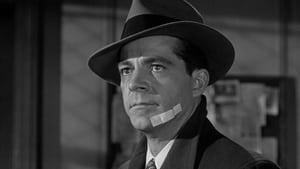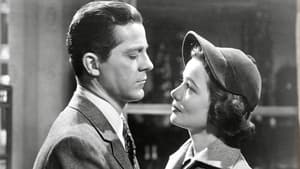Contact: [email protected]
Video Sources 0 Views
- Watch trailer
- Where the Sidewalk Ends


Synopsis
Table of Contents
ToggleReview: Where the Sidewalk Ends (1950) – A Noir Masterpiece of Morality and Redemption

Introduction
Where the Sidewalk Ends, released in 1950, is a gripping film noir directed by Otto Preminger. Known for its atmospheric cinematography, complex characters, and moral ambiguity, this classic noir exemplifies the genre’s exploration of the darker aspects of human nature. In this review, we will delve into the shadowy world of Where the Sidewalk Ends and uncover its enduring impact on film noir.
Check The Full Colorized Movies List
Check Our Colorized Movies Trailer Channel
Understanding Where the Sidewalk Ends (1950): Director, Cast, and Genre
Directed by Otto Preminger, Where the Sidewalk Ends features a stellar cast led by Dana Andrews in the role of Detective Mark Dixon, alongside Gene Tierney, Gary Merrill, and Karl Malden. The film falls within the genre of film noir, characterized by its moody atmosphere, morally ambiguous characters, and hard-boiled storytelling.
Exploring the World of Where the Sidewalk Ends (1950): Plot and Characters
Set against the gritty backdrop of New York City, Where the Sidewalk Ends follows the story of Detective Mark Dixon, a tough and cynical cop with a troubled past. When Dixon accidentally kills a suspect during an interrogation, he goes to great lengths to cover up the crime, leading him down a dangerous path of deception and betrayal. Along the way, he forms a deep connection with the suspect’s widow, adding a layer of moral complexity to his already troubled conscience.
The Art of Film Colorization
While Where the Sidewalk Ends was originally filmed in black and white, its early colorized version adds a new dimension to its atmospheric cinematography. The colorization process enhances the film’s moody visuals and captures the gritty realism of its urban setting with stunning clarity.
Early Colored Films: A Brief History
The history of early colored films is marked by innovation and experimentation as filmmakers sought to enhance the visual appeal of their movies. From hand-tinted frames to pioneering technicolor processes, the evolution of colorization techniques transformed the cinematic landscape, offering audiences a new way to experience classic stories and iconic characters.
Where the Sidewalk Ends (1950) and Its Early Colored Version
The decision to release Where the Sidewalk Ends in a colorized format was made with the intention of immersing audiences in the gritty realism of its urban setting and enhancing the film’s visual impact. While some purists may prefer the original black and white version, the early colorized edition of Where the Sidewalk Ends adds a new layer of depth to its atmospheric cinematography and captures the moody intensity of its noir aesthetic with breathtaking clarity.
The Debate Over Film Colorization
The debate over film colorization continues to divide audiences and industry professionals alike. While some argue that colorization breathes new life into classic films and makes them more accessible to modern audiences, others maintain that it compromises the artistic integrity of the original work. As technology advances and filmmaking techniques evolve, the debate over colorization remains a topic of ongoing discussion within the film community.
Examining Where the Sidewalk Ends (1950) as an Early Colored Film
Viewing Where the Sidewalk Ends in its early colorized iteration offers audiences a fresh perspective on its moody visuals and atmospheric storytelling. The colorization process enhances the film’s gritty realism and captures the dark, shadowy world of film noir with stunning clarity. As viewers are drawn into the morally ambiguous world of Detective Mark Dixon, they are treated to a visual feast that immerses them in the tension and suspense of the story.
Influence and Legacy: Where the Sidewalk Ends (1950)’s Impact on Cinema
Where the Sidewalk Ends is widely regarded as a classic example of film noir that continues to captivate audiences with its moody atmosphere and morally complex characters. Its exploration of themes such as guilt, redemption, and the search for identity resonates with viewers of all ages, making it a timeless classic that continues to influence filmmakers and inspire new generations of cinephiles.
Director’s Cinematic Legacy: Beyond Where the Sidewalk Ends (1950)
Otto Preminger’s directorial legacy extends far beyond Where the Sidewalk Ends, encompassing a diverse body of work that includes acclaimed films such as Laura and Anatomy of a Murder. As one of the most respected filmmakers of his generation, Preminger was known for his innovative storytelling, bold visual style, and uncompromising vision. Where the Sidewalk Ends stands as a testament to his talent and creativity, solidifying his reputation as one of the great auteurs of classic Hollywood cinema.
Themes Explored in Where the Sidewalk Ends (1950)
At its core, Where the Sidewalk Ends explores themes of guilt, redemption, and the search for identity in the morally ambiguous world of film noir. Through its gripping storyline and memorable characters, the film offers a nuanced portrayal of human nature, challenging viewers to confront their own beliefs about right and wrong.
Reception and Controversy Surrounding Where the Sidewalk Ends (1950)
Upon its release, Where the Sidewalk Ends received widespread critical acclaim for its atmospheric cinematography, gripping narrative, and powerhouse performances. While the decision to release the film in a colorized format sparked debate among purists, its enduring popularity has cemented its status as a timeless classic of film noir.
Where to Watch Where the Sidewalk Ends (1950) Online
For those eager to experience Where the Sidewalk Ends for themselves, the film is readily available on popular streaming platforms such as Amazon Prime Video, Google Play Movies, and iTunes. Whether viewed in its original black and white format or its early colorized iteration, Where the Sidewalk Ends offers a cinematic experience that is both gripping and visually stunning.
FAQs About Where the Sidewalk Ends (1950)
1. Is Where the Sidewalk Ends based on a true story?
No, Where the Sidewalk Ends is a fictional film that explores themes of guilt, redemption, and moral ambiguity in the world of film noir. While the film’s storyline may draw inspiration from real-life events and social issues, its characters and plot are works of fiction.
2. Who starred in Where the Sidewalk Ends?
Where the Sidewalk Ends stars Dana Andrews as Detective Mark Dixon, alongside Gene Tierney, Gary Merrill, and Karl Malden. Their powerful performances bring depth and authenticity to the film’s moody atmosphere and morally complex storyline.
3. What is the central message of Where the Sidewalk Ends?
At its core, Where the Sidewalk Ends explores themes of guilt, redemption, and the search for identity in the morally ambiguous world of film noir. Through its gripping narrative and memorable characters, the film offers a nuanced portrayal of human nature, challenging viewers to confront their own beliefs about right and wrong.
4. Why was Where the Sidewalk Ends released in a colorized format?
The decision to release Where the Sidewalk Ends in a colorized format was made with the intention of immersing audiences in the gritty realism of its urban setting and enhancing the film’s visual impact. While some purists may prefer the original black and white version, the early colorized edition of Where the Sidewalk Ends adds a new layer of depth to its atmospheric cinematography and captures the moody intensity of its noir aesthetic with breathtaking clarity.
5. What is the legacy of Where the Sidewalk Ends?
Where the Sidewalk Ends is widely regarded as a classic example of film noir that continues to captivate audiences with its moody atmosphere and morally complex characters. Its exploration of themes such as guilt, redemption, and the search for identity resonates with viewers of all ages, making it a timeless classic that continues to influence filmmakers and inspire new generations of cinephiles.
6. Are there any sequels or remakes of Where the Sidewalk Ends?
No, there have been no official sequels or remakes of Where the Sidewalk Ends. However, the film’s enduring popularity has inspired countless reinterpretations and homages in various media. Nonetheless, none have captured the gritty realism and moral complexity of the original 1950 classic.
7. Where can I watch Where the Sidewalk Ends online?
For those eager to experience Where the Sidewalk Ends for themselves, the film is readily available on popular streaming platforms such as Amazon Prime Video, Google Play Movies, and iTunes. Whether viewed in its original black and white format or its early colorized iteration, Where the Sidewalk Ends offers a cinematic experience that is both gripping and visually stunning.
Conclusion
In conclusion, Where the Sidewalk Ends (1950) stands as a noir masterpiece that continues to captivate audiences with its moody atmosphere, morally complex characters, and gripping storyline. Whether viewed in its original black and white format or its early colorized iteration, Otto Preminger’s insightful direction and the powerhouse performances of the cast offer a cinematic experience that is both thought-provoking and visually stunning. As audiences continue to be drawn into the shadowy world of film noir, Where the Sidewalk Ends remains a timeless classic that continues to stand the test of time.




















